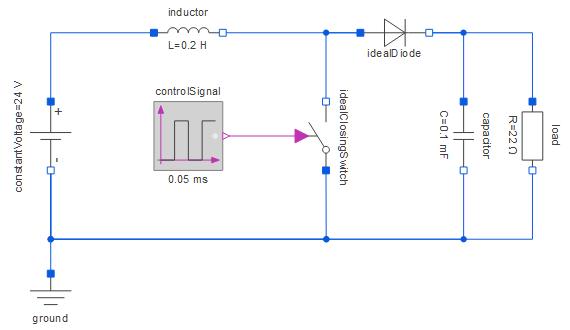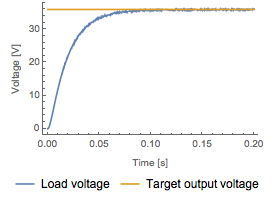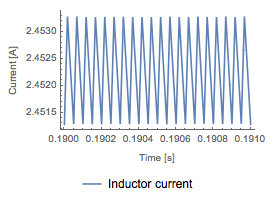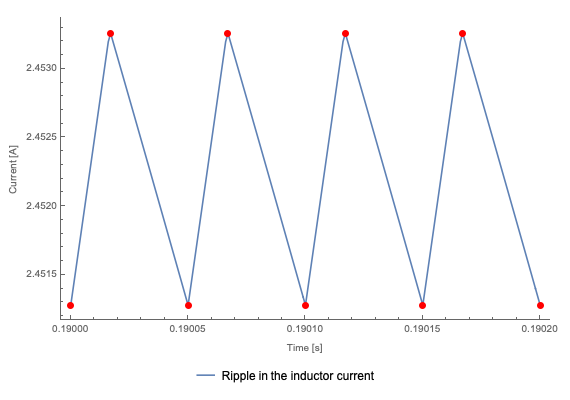昇圧コンバータ
昇圧コンバータは電圧を低レベルから高レベルに上げるために使われます.昇圧コンバータは電気自動車で電池スタックからエンジンへの電圧を上昇させたり,LEDライトで電池から発光ダイオードまでの電圧を上昇させたりするのに使われます.
モデル
昇圧コンバータは,2つのスイッチ(通常ダイオードとトランジスタ),インダクタ,コンデンサを使用して直流電圧を低レベルから高レベルに変換するスイッチング電源です.スイッチがオフのとき,インダクタ電流はダイオード,負荷,コンデンサを通過します.スイッチがオンになるとインダクタ電流は増加しダイオードを通過しません.出力電圧を平坦化するためにフィルタコンデンサを加えます.

System Modelerの標準コンポーネントで作成された昇圧コンバータのモデル
パラメータ値を単位付きで表示
自分で選んだ表示単位を使って描画されるパラメータの値をすぐにチェックすることができます.
電流リップル解析
昇圧コンバータでは出力に脈流があります.出力リップルはスイッチング電源の使用における主な欠点の一つです.

生成された出力電圧と目標電圧

インダクタ電流は入力電流と等しい
出力電圧は入力よりも常に高く,出力電流は入力電流よりも常に低くなっています.

インダクタ電流に印のついた最低値と最高値
分析とシミュレーション解析を取り混ぜる
電流のリップルについての理論値  をシミュレーションの値と比較することができます.
をシミュレーションの値と比較することができます.
Wolfram言語を使うことで,シミュレーションデータから最大値と最低値を取り出し,電流リップルのピークピーク値を計算することができます.この場合,その値は0.0019であり理論的値0.002と比較することができます.ダウンロード可能な例にはこの計算が含まれています.
Wolfram System Modeler
評価版
ご購入
System ModelerはWindows,macOS,
Linuxで日本語と英語でご利用になれます »
ご質問やコメントはWolframエキスパートまでお寄せください »